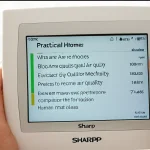Current Air Quality Challenges in Urban Schools
Urban air quality poses a significant challenge for schools, particularly in densely populated areas across the UK. The health impacts of poor air quality on students are concerning, affecting both well-being and academic outcomes. Prolonged exposure to pollutants can exacerbate respiratory illnesses, increase allergy symptoms, and decrease cognitive function among students. This makes it difficult for children to concentrate and perform well in their studies.
The key pollutants troubling classroom environments include nitrogen dioxide (NO2), particulate matter (PM), and volatile organic compounds (VOCs). These originate from various sources of pollution such as traffic emissions, industrial discharges, and even construction activities nearby. In many cases, the indoor air quality becomes even more compromised due to inadequate ventilation, trapping these pollutants within the school premises.
Additional reading : Unleashing AI Power in UK Retail: Transforming Customer Segmentation for Unmatched Success
Addressing urban air quality in schools involves understanding the extent of the problem and its health impacts on students. Schools need to become aware of the specific pollutants affecting their environments and actively monitor these pollutants to implement effective solutions. Proactive measures can help to safeguard student health and enhance their learning environments, contributing to better educational outcomes.
Innovative Strategies for Improving Air Quality
To tackle the adverse effects of pollution, schools are turning to innovative solutions that significantly enhance urban air quality. Embracing technology, many institutions have implemented air quality improvement strategies aimed at protecting students’ health and academic outcomes. For instance, advancements in air purification systems have shown promising results.
In the same genre : Revolutionizing UK Real Estate: How Virtual Tours Are Changing Home Searches
These systems use cutting-edge filters to remove harmful pollutants, thereby reducing the concentration of nitrogen dioxide, particulate matter, and volatile organic compounds indoors. Additionally, schools are exploring ventilation systems equipped with sensors that automatically regulate airflow based on real-time air quality data. This smart approach ensures that fresh air circulates effectively, diminishing the impact of external pollution sources on the indoor environment.
Another innovative angle is the integration of green walls and plant installations within classrooms. These not only filter and purify indoor air naturally but also create a more uplifting and oxygen-rich atmosphere for students. Case studies reveal that some urban schools have successfully adapted these technologies, experiencing a noticeable improvement in student health and performance.
Adopting such forward-thinking strategies not only mitigates pollution exposure but also fosters a healthier learning environment, underscoring the critical role of technology in schools today.
Practical Tips for Schools
Improving urban air quality is a daunting task, yet schools can adopt simple, practical advice to make a significant impact. Implementing actionable steps can help enhance the school’s environment efficiently without stretching budgets excessively.
An easily implementable measure is increasing ventilation in classrooms. Opening windows regularly, weather permitting, can significantly improve air circulation. Additionally, schools can incorporate indoor plants known for their air-purifying properties to naturally clean the air.
Engaging students and staff in air quality monitoring not only raises awareness but also facilitates real-time understanding of the environmental condition. Providing basic training on how to use monitoring devices empowers community members to take an active role.
Establishing an air quality task force within the school can centralise efforts. This dedicated group, comprising teachers, parents, and even students, can oversee initiatives, ensuring continuity.
Simple initiatives like organising awareness events or contests can promote student involvement, while informational workshops update staff on current best practices.
By following these strategies, schools not only enhance their air quality but also foster an educational environment where awareness and collective responsibility play pivotal roles. School initiatives transform not just classrooms but communities, embedding sustainable practices in daily operations.
Best Practices for Implementation
When developing effective air quality strategies in schools, it is crucial to adhere to a set of best practices ensuring positive outcomes. Collaboration is key; involving teachers, students, and parents in implementation guidelines fosters a community committed to healthier environments.
Effective school policies start with comprehensive assessments to identify specific air quality issues. Regular monitoring, often facilitated by portable quality monitors, can provide ongoing data essential for informed decisions. Establishing collaborative efforts among staff, students, and parents is equally important. This cooperation can involve training sessions for teachers on pollution sources and inviting students to participate in data collection and analysis.
Moreover, success stories from various schools have shown that integrating student-led projects can significantly enhance understanding and engagement. For example, schools that have implemented student-run initiatives report increased awareness and a measurable improvement in air quality indicators.
Through student participation in real-world assessments and the creation of collaborative air quality groups, schools can develop tailored strategies that not only meet official regulations but also resonate with their unique needs. In this way, every stakeholder plays a role in creating sustainable environments conducive to learning and well-being.
Research and Evidence Supporting Strategies
Extensive research findings endorse the significance of addressing air quality in urban schools. A range of studies highlights the detrimental impact of pollutants on student health and academic performance. For example, exposure to nitrogen dioxide and particulate matter has been linked to increased rates of asthma and other respiratory conditions. These health issues, in turn, affect students’ ability to concentrate and perform academically.
Evidence-based practices focus on mitigating these impacts by implementing effective air quality improvement strategies. One major study found that schools utilizing advanced air purification systems showed a notable decrease in reported respiratory symptoms among students. This correlation underscores the potential for improved air quality to enhance learning environments.
Moreover, health studies reveal a direct correlation between better air quality and improved cognitive function in students. Classroom environments with cleaner air have been associated with higher test scores and overall academic achievement. Such findings provide a strong argument for prioritizing air quality improvements in school settings.
These insights drive the adoption of evidence-based practices in urban schools, ensuring that solutions are grounded in scientific research and yield measurable benefits for student health and education.
Funding Opportunities and Regulatory Frameworks
Exploring funding resources and regulatory frameworks is crucial for schools seeking to enhance urban air quality. Various funding opportunities exist for air quality improvement projects, allowing schools to adopt advanced technologies without bearing the full cost. Schools can apply for grants and financial aid provided by governmental and non-governmental organizations focused on environmental health and education.
Government regulations set standards and guidelines that schools must adhere to, ensuring a safe learning environment. Schools are often required to meet specific air quality metrics, and adherence to these regulations can unlock additional support opportunities.
By partnering with local governments, schools can benefit from shared resources, insights, and experiences. Successful collaborations have led to improved campus air quality and the integration of practical, regulatory-compliant solutions. For instance, schools might participate in pilot programs that provide cutting-edge air quality sensors, facilitating compliance with established metrics.
Understanding the available funding and regulatory context is critical in forming strategic partnerships that ease financial burdens while promoting healthier environments. These frameworks offer schools the support necessary to effectively improve air quality, demonstrating a commitment to both student welfare and environmental responsibility.







